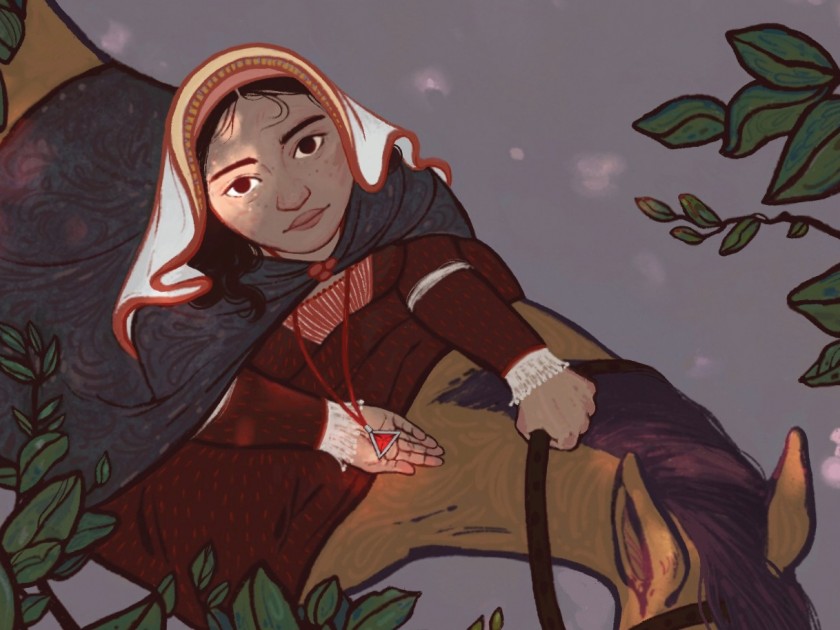
From the cover of A Ceiling Made of Eggshells
We spoke to Gail Carson Levine, author of A Ceiling Made of Eggshells, on June 10th as part of our JBC Authors at the Table series — you can watch the thirty minute chat here. Check out below some questions we didn’t have time for and keep the conversation going. See the whole lineup for JBC Authors at the Table.
I loved that you added Christopher Columbus into the story — can you talk about how and why you included him in this story?
At first my editor worried that Columbus’s inclusion was a little too convenient, but I told her that he was there at the fall of Málaga, lobbying for his first voyage. Isaac Abravanel, upon whom Belo is loosely based, was there, too. Don Isaac and Columbus could actually have met, since he was looking for backers, but I couldn’t find any record of a meeting. When she learned the history, my editor was delighted that Columbus could have a cameo.
A Ceiling Made of Eggshells is mostly serious, but the Columbus scene is lighthearted. I wanted to give my readers a break, and I had fun inventing a big personality for him.
Loma was lucky that her family was so wealthy and powerful and able to really help the Jewish people of the time. It gave amazing insight into a world many of us might not have thought about. Why did you choose to set your book inside Loma’s family, from Loma’s perspective?
I could have written about a poor family during that time, since most Jewish families were poor by the late fifteenth-century — taxed into poverty to finance the wars to consolidate Spain under Christian rule. But the men in a prominent, wealthy family would have a bigger perspective and might be on the spot for the great events. Since I was writing for kids, I needed a child protagonist, so I invented Loma and created the circumstances that made her grandfather grow attached to her.
Loma has a necklace from her grandmother that she believes protects her from harm. And she makes necklaces for all her nieces and nephews, her littles, as she calls them, to keep them safe. Can you talk a little bit about that, and how we might see that as superstitious, but then was a much more normal idea?
Not everybody at the time believed in the efficacy of amulets. Maimonides, for one, didn’t, but other renowned rabbis did. Loma’s father is dubious. I’m not sure how much stock Loma herself puts in them. Still, she’s so worried about the littles that she wants to give them every shred of protection she can.
The research you did must have been extensive, and I was shocked to read about how forceful and frequent conversion was, especially for children — can you talk a bit about that?
Sometimes the conversion of children was a tactic to bring about the conversion of the child’s relatives. That’s what I set up near the end of the book when Loma is imprisoned shortly before all the Jews have to leave Spain. Historically, this was done to Jews who fled to Portugal after the expulsion. Children were taken from their parents and baptized. The families could be reunited only if the parents converted. (Eventually, all the Jews of Portugal were forced to convert en masse, which led to the Portuguese term for them: “baptized Jews.”)
I can’t explain the urgency behind the attempts to convert, but Muslims also suffered from it and have their own tragic history in Spain before they, too, were expelled.
Gail Carson Levine has published twenty-five books for children. She is best known for her Newbery Honor book Ella Enchanted. Her other Jewish-themed historical novel, Dave at Night, is loosely based on her father’s childhood in the Hebrew Orphan Asylum. Most of her books are fantasy novels, but she has two picture books and two how-to’s about writing, also for children.